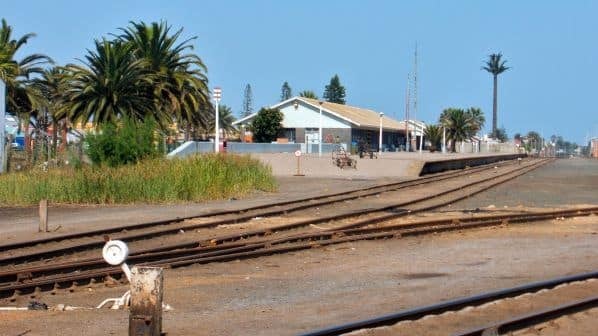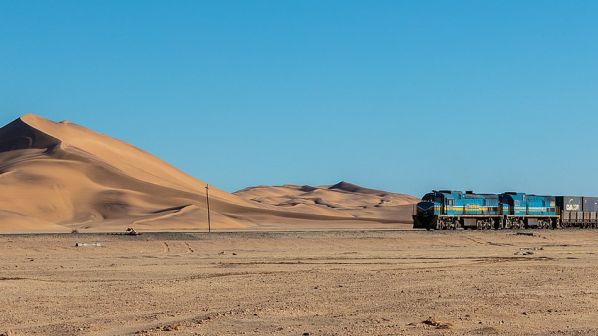CHINA Gezhouba Group Corporation (CGGC) has completed a project to restore the 107.5km of line between Walvis Bay and Arandis in Namibia despite delays caused by the Covid-19 pandemic, weather conditions in the desert environment and materials shortages.
The railway restoration project forms an important part of the Namibian government’s Vision 2030 strategy to increase transport capacity and drive economic development, as well as making the country a transport and logistics hub for neighbouring African countries.
The $N 1.029bn ($US 67.5m) project, known as A1S1, has been funded to the tune of 56% by the Namibian government, and 44% through a loan from the African Development Bank.
Walvis Bay - Arandis forms 53.2% of the 1067mm-gauge, 201km line running from Walvis Bay to Kranzberg, where it joins lines running south to the Namibian capital, Windhoek, and north to Otavi. Line speed was previously limited to 40km/h, but as a result of the upgrade it has now been increased to 80km/h.

Arandis is the location for a passing loop and while CGGC has undertaken modernisation of the section south from there to Walvis Bay, the upgrade work on the remaining northern section to Kranzberg is being undertaken under a separate contract by a joint venture of Qingjian Group and Unik Construction Engineering.
CGGC began work to rehabilitate and upgrade its section of the line in November 2020, having been awarded the 27-month contract at the end of 2019 (LINK to IRJ December 7, 2020 story).
CGGC representative Mr Li Lije says that since the start of the project, his company has had to overcome difficulties including the Covid-19 pandemic, frequent strong winds and dust storms in the desert environment, and difficulties in obtaining the high-quality materials required.
However, the project has provided more than 500 local jobs and has led to the training of a number of skilled workers in Namibia.
For more data on rail upgrade projects in Africa and around the world, subscribe to IRJ Pro.

